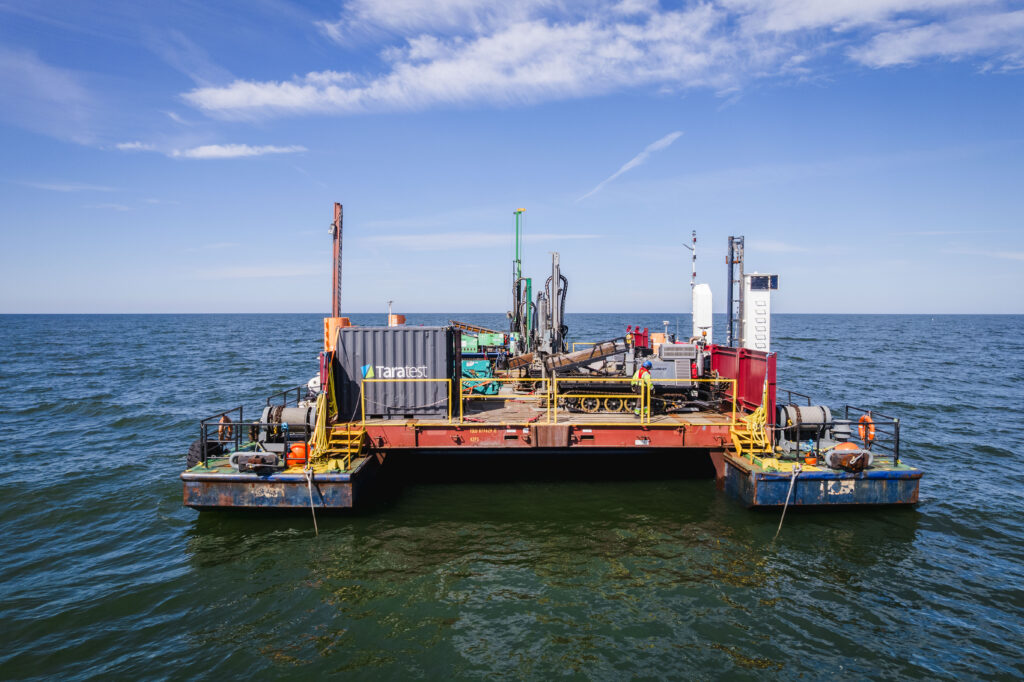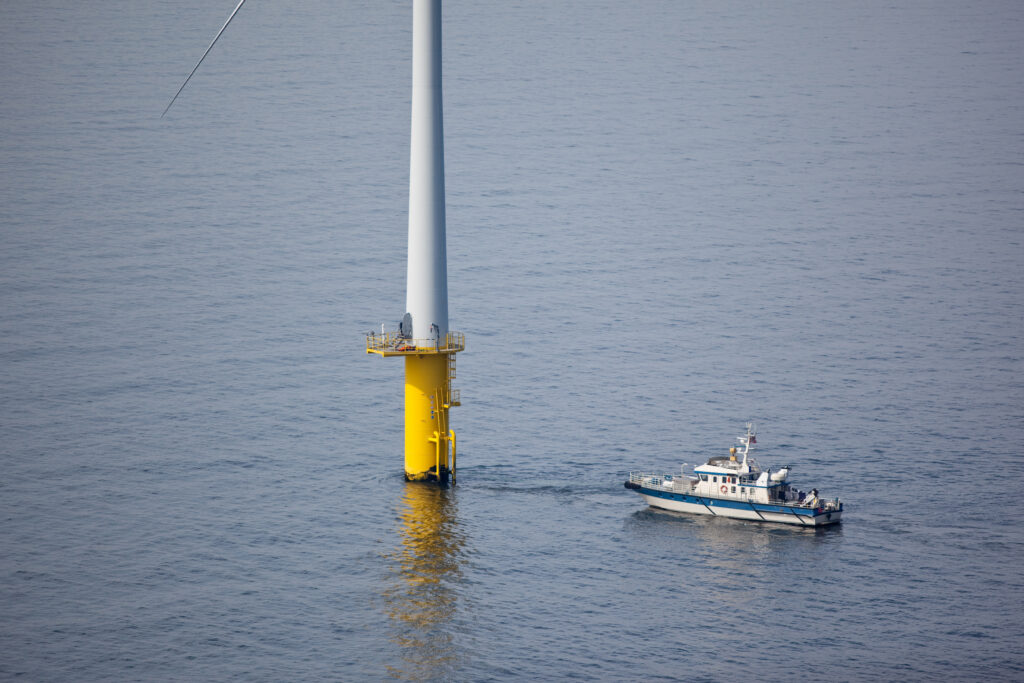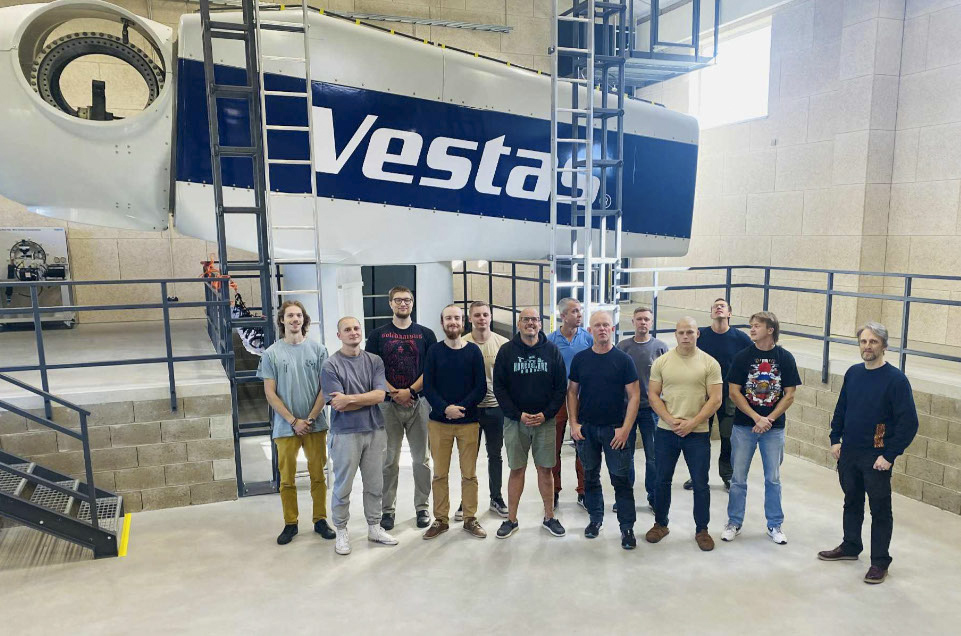When people talk about offshore wind farms, they usually only think of large white wind turbines that spin at sea to catch the wind. However, an offshore wind farm is only a visible part of a much broader value chain that begins years before the first wind turbine is erected and continues for several decades after that. The development of Utilitas’ Saare-Liivi offshore wind farm shows how diverse the economic impact of this field is and what opportunities it offers to the Estonian economy.
If we start from the very beginning, then the construction of an offshore wind farm is preceded by years of development work, which includes extensive environmental and technical studies. “We have carried out more than 20 different surveys at sea: e.g. studies of birds, bats, seals, fish and benthic biota. In addition, seabed mapping and geotechnical drilling have been carried out,” said Andrus Zavadskis, Technical Manager of Utilitas Wind, explaining the total volume of preparations related to the development.
According to him, Utilitas has deliberately favored local research institutions and organizations in carrying it out, so that the knowledge and experience would remain in Estonia. In addition, competence from outside Estonia has been involved, mainly with the aim of increasing the skills of Estonian service providers. In total, millions of euros have been invested in research, most of which has reached Estonian companies and research institutions.

Billions of euros in investment
When the exploration phase ends and the building permit is obtained, the actual major investment begins. “In the case of a 1000-megawatt offshore park, the total investment is several billion euros, which will be spent on erecting wind turbines at sea and connecting them to the electricity grid,” Zavadskis specified.
Such a sum brings significant opportunities, but at the same time, it also poses challenges to local companies in terms of the technical execution of the works, where the experience of the work is still insufficient in terms of such complexity and scale. Therefore, the most realistic options for domestic companies are related to the construction of foundations.
“For example, it would be most reasonable to pour a concrete foundation in Estonia, so as not to make the transport costs very high. Metal offshore wind farm structures and foundation parts have already been manufactured in Estonia, for example, by BLRT,” Zavadskis noted. “Each wind turbine needs its own foundation, in addition to the foundation necessary for the installation of substations. However, this is such a large volume that it may prove to be a serious challenge for today’s Estonian construction sector.”
“The knowledge and capacity to build wind farm maintenance vessels also exists in Estonia. It is simply a question of the ability to produce all this in large quantities in a relatively short time,” he added.
Role of ports as logistics centers is increasing
In addition to offshore wind farm developers, ports play a key role in offshore construction. In order to take advantage of the economic opportunities of wind farms in the Baltic Sea, the Port of Tallinn is currently building a new quay in Paldiski, which will be an important link in the erection of wind turbines.
A quay with the appropriate parameters and the adjacent industrial area would allow wind turbine components manufactured in different countries to be brought together in Estonia in order to transport them from there to the sea to various offshore wind developments. “Everything that concerns the storage and transport of wind turbine parts – this capacity is available in Paldiski,” said Zavadskis.
“Wind turbine components are delivered all over the world. The gondolas are manufactured in Denmark or Poland, and there are factories for the manufacturing of blades and towers in Europe as well as in America and Asia. So far, we have preferred the production of European factories as much as possible,” he added. In the Port of Paldiski, the wind turbine parts will be lifted from the transport vessel to the quay, various pre-erection tests will be carried out, the wind turbine will be ready for erection and lifted onto the installation vessel, after which the ship will move to the wind farm area and install several wind turbines in one sailing.
“Marine substations will also be installed, but they will be brought directly from the manufacturing plant to the area of the wind farm with barges. In addition, it is necessary to install electrical cables between the wind turbines and the marine substation and from the substation to the mainland with submarine cables to the landing point and with underground cables from there to the connection point,” Zavadskis described the logistics process.

Maintenance creates lasting jobs for decades to come
While the construction phase is the most visible activity, the greatest and long-term value comes from permanent jobs related to the maintenance period. An offshore wind farm will operate for at least 30 years and will require regular maintenance throughout this time.
“If we take the Saarde wind farm on land, for example, which has nine wind turbines, then it essentially needs three or four technicians who deal with the daily maintenance of the farm, as well as technicians who come specifically for regular maintenance. The number of technicians needed in the marine park is significantly higher, because there are several times more wind turbines and ships and ship crews are also needed,” said Zavadskis. For example, in the case of 80 wind turbines, about 30-35 technicians need to be employed at the same time.
Maintenance of wind turbines does not only mean jobs at wind turbines – the entire support system needs people. “If a service vessel, which is usually a thirty-meter catamaran, is no further than 50 kilometers from the park, it sails out of the harbor every morning and brings the men back in the evening. It also creates jobs on land: in accommodation and catering establishments, laundries and safety equipment checks,” he added.
Training system has gained momentum
According to the OSKA survey of the national labor needs, Estonia would need at least 600 graduates in the field of wind energy between 2025 and 2040, including 300 wind turbine technicians and 150 blade maintenance technicians.
In order to prepare for the growing demand for maintenance technicians, Kuressaare Vocational School started teaching the specialty of maintenance of wind turbine blades for the first time this autumn, specifically for offshore wind turbines. The Pärnu County Vocational Education Centre has been training wind turbine technicians since last autumn.
At the same time, in addition to direct wind turbine technicians, various needs for support functions arise in connection with the maintenance of wind turbines. For example, people working on land who monitor the condition and operation of wind turbines on a daily basis in the control center, warehouse operators, etc.

The long-term view
Offshore wind energy value chain extends far beyond the production and installation of wind turbines. This includes research, engineering, manufacturing, logistics, maintenance, and support services. Each stage creates opportunities for different companies – from specialist consultants to accommodation establishments.
The opportunities are there, but in order to be successful, Estonian companies must invest in the development of their capabilities at the right time. Development and construction are separated by several years, which gives local companies time to prepare themselves for future challenges and opportunities.
Therefore, Zavadskis calls on entrepreneurs to plan their capabilities at an early stage in order to put themselves in competition in the erection process and subsequent maintenance of offshore wind turbines, if they wish.
“We would definitely prefer that local companies contribute to the development of an offshore wind farm if the quality and capacity offered are at a competitive price,” he added. “We have already been contacted by several companies and research institutions who are interested in it. We are always ready to think along and explain our needs.”

